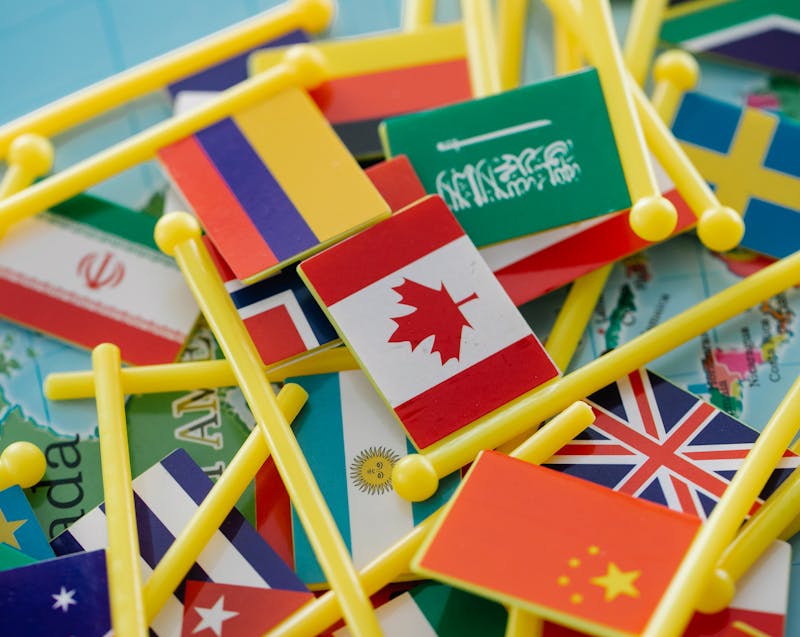- Nordic nations lead the way — Denmark, Sweden, and Finland rank highest due to strong social support, world-class education, and generous parental leave policies.
- Safety, equality, and healthcare are the top factors that make a country family-friendly, alongside affordable childcare and a stable economy.
- Work-life balance matters — countries like the Netherlands and New Zealand emphasize flexible schedules and family time, helping parents thrive both at home and work.
- Education quality remains key — Finland, Germany, and Switzerland stand out for innovative, inclusive, and well-funded public education systems.
- Cost of living and taxes vary — while high-tax nations offer great services, families must balance social benefits with affordability.
- No single “best” country fits everyone — each family’s priorities (climate, culture, career, affordability) shape what “best” truly means.
Deciding where to raise children is one of the biggest life choices parents or couples can make. You want a place that offers safety, quality education, solid healthcare, work-life balance, and a supportive community. In 2025, with dynamic social trends, shifting economies, and evolving public policies, some countries are standing out more than ever as prime locations for family life.
This article surveys the top 10 best countries to raise children in 2025, based on multiple criteria like child well-being, education, social support, safety, and family policies. Each country profile will include what makes it exceptional for families, challenges to watch out for, and tips if you’re considering relocation.
Whether you’re planning to move abroad or simply curious about global benchmarks for raising kids well, this guide gives you well-researched insight to inform your decisions.
How Do We Judge the “Best Countries to Raise Children”?
Before diving into the list, it’s important to understand what we mean by “best” — because no country is perfect. In this section, we clarify the criteria and data sources that underpin the selections.
When ranking countries for family life, multiple dimensions matter: from objective measures like infant mortality, school performance, parental leave, and crime rates to more subjective ones like quality of life, child happiness, and social support. Different rankings weight these dimensions differently. In this article, we blend quantitative data (from sources like US News/International surveys, Global Peace or Prosperity indices, education rankings) with qualitative assessments (expat experiences, policy reviews) to form a holistic view. The aim is not just to name the “top 10” but to help prospective parents or couples see trade-offs and decide which factors matter most for their family.
What Key Factors Should Parents Consider?

Before you look at country rankings, these are the pillars you should evaluate when considering where to raise children:
- Safety and security: low crime, political stability, reliable infrastructure.
- Healthcare access and quality: universal or affordable health services, child and maternal health outcomes.
- Education system: public school quality, access, curriculum flexibility, and teacher quality.
- Parental and family policies: maternity/paternity leave, child allowances, childcare subsidies.
- Work-life balance and labor policies: average working hours, vacation time, flexible work.
- Cost of living and affordability: housing, food, transportation, taxes.
- Social support and culture: inclusivity, community, cultural acceptance of families, and child-friendly spaces.
- Long-term stability: macroeconomic health, rule of law, environmental resilience.
Because priorities differ across families (e.g., some may prioritize education over cost), we include trade-offs with each country.
Top 10 Best Countries to Raise Children in 2025
Here are the 10 countries that, in 2025, consistently stand out in global rankings and parental assessments as ideal for family life. (Note: the ranking order is not absolute — they each bring distinct strengths.)
1. Denmark
Why Denmark shines for families
Denmark often tops global indexes for happiness, social equality, and family-friendly policies. In 2025, its combination of generous parental leave, strong public services, and trust in institutions continues to make it a benchmark country for raising children.
What makes it great:
- Parental leave & support: Parents receive extensive paid leave, and flexible work arrangements are normalized.
- Education & childcare: Universal childcare and preschool programs are available, slotting kids into early learning seamlessly.
- Work-life balance: Danish culture strongly supports shorter workweeks, flexible scheduling, and high holiday allowances.
- Safety, equality & welfare: Denmark ranks high in gender equality, and trust in public institutions is high.
Challenges/caveats:
- High taxes: the social safety net comes with high income taxation.
- Language: While many people speak English, Danish fluency helps with integration.
- Cost of living: housing and general costs are high, though compensated by strong social services.
2. Sweden
Why Sweden is ideal for raising children
Sweden, like its Nordic neighbors, continually ranks among the most child-friendly nations. Its policies around parental leave, social support, and gender equality make it a go-to option for couples seeking a balanced family life.
What stands out:
- Equality & gender roles: Swedes emphasize sharing parental responsibilities, and paternity leave is encouraged.
- Robust public services: healthcare, schooling, and social welfare are well-funded and accessible.
- Quality of life: clean environments, abundant green spaces, safe cities.
- Innovative education: Swedish schools often focus on holistic development over pure test-based measures.
Challenges:
- Weather/daylight: The northern parts of Sweden have very dark winters.
- Tax burden: Similar to Denmark, taxes are high.
- Housing competition: In urban areas, housing can be scarce or expensive.
3. Finland
Why Finland is a top contender
Finland is frequently cited as one of the world’s happiest countries, especially for children. Its distinctive education philosophy, strong support for families, and social equity make it a standout in 2025.
What makes it exceptional:
- Education model: Finland’s system emphasizes play, minimal standardized testing, and individualized learning pace.
- Family support & baby benefits: New parents receive generous support, including the famous “baby box” and financial assistance.
- Societal trust & equality: Finnish society emphasizes equality, social cohesion, and trust in government.
- Child well-being: Children report high life satisfaction and well-being scores.
Considerations:
- The cost of living is high in cities.
- Integration and language learning can take time for non-Finnish speakers.
- Cold climate can be challenging for those unused to long winters.
4. Switzerland
Why Switzerland is a strong family choice
Switzerland combines exceptional infrastructure, multilingual environments, economic stability, and strong public services. In quality-of-life rankings, it often comes out near the top.
What works well:
- Healthcare & infrastructure: Top-tier hospitals, efficient transit, excellent emergency services.
- Multilingual schooling: Access to multiple official languages (German, French, Italian) gives children linguistic benefits.
- Safety & governance: Political stability, strong rule of law, and safety in cities and rural areas.
- Balance & commuting: Efficient public transit reduces commute times; clean urban planning.
Challenges:
- High cost: housing, schooling (in some private tracks), and general services can be expensive.
- Insurance complexity: Though healthcare is excellent, insurance systems can be complicated.
- Permit/immigration: residency rules vary by canton and can be bureaucratic.
5. Netherlands
Why the Netherlands appeals to families
The Netherlands often ranks among the top kid-friendly countries. Its bicycle culture, safety, and emphasis on childhood freedom create a nurturing environment.
Highlights:
- Child and pedestrian safety: Bikes, walkable cities, and traffic infrastructure that protects children.
- Outdoor play & independence: Dutch children often walk or bike to school, fostering early independence.
- Education & bilingualism: Many schools offer strong foreign-language programs.
- Strong work regulation: Generous vacation, good leave policies, and often part-time work options.
Downsides:
- Housing in major cities is competitive.
- Weather: rainy seasons and cloud cover can be heavy.
- Taxation: accommodations for families exist, but the tax burden is still notable.
6. Canada
Why Canada is excellent for family life
Canada consistently ranks among the world’s top nations for quality of life, openness to immigrants, and safety. For expatriate families, it offers many advantages.
Strong suits:
- Welcoming immigration policies: Many pathways for families, skilled workers, or investors.
- Public education & healthcare: Provinces offer good-quality public systems for children.
- Safety & natural environment: Ample space, parks, and low violent crime rates in many regions.
- Multicultural society: Diverse communities, which help children develop global perspectives.
Challenges:
- Variance across provinces: services, taxes, and quality can differ.
- Winter climates: In many parts, long, harsh winters are a reality.
- Cost in major cities: places like Vancouver or Toronto are expensive to live in.
7. New Zealand
What makes New Zealand family-friendly
New Zealand offers expansive nature, relaxed pace, good healthcare and education, and safety — all significant for raising children.
Perks:
- Natural environment & outdoor lifestyle: children can grow up close to nature with lots of space to explore.
- Good schooling and health services: public systems perform consistently well.
- Safety & community friendliness: smaller communities, strong local bonds.
- Balanced pace: less hustle, more time for family.
Caveats:
- Remoteness: if you have strong ties elsewhere, travel is longer and costs more.
- Job market constraints: niche industries may dominate, so employment may require planning.
- Housing affordability, especially in Auckland and Wellington.
8. Germany
Why Germany is on this list
Germany is often underrated but offers robust social systems, strong education, and a good balance between cost and quality of life.
Advantages:
- Free higher education: Many public universities charge minimal or no tuition.
- Social safety nets & family allowances: monthly child benefit (“Kindergeld”), subsidies for childcare.
- Strong public transport & infrastructure: well-connected cities, regional options.
- Mid-tier cost of living: relative to Western Europe, Germany offers good value.
Potential drawbacks:
- Immigration & integration: language requirements and bureaucracy can be barriers.
- Urban congestion: major cities sometimes suffer from housing shortages.
- Variation across states (Länder): quality of services may differ regionally.
9. Iceland
Why Iceland stands out
Although a smaller country, Iceland punches above its weight in safety, equality, happiness, and child well-being, making it a top-tier choice.
Positives:
- Lowest crime rates: safely raising kids is nearly stress-free in many parts.
- Strong gender equality & parental policies: leave, social supports, and norms favor shared parenting.
- High quality of life: clean environment, community trust, family cohesion.
- Small scale: tight communities where children can feel rooted.
Trade-offs:
- Geographic isolation: travel costs are higher; the climate is harsh in some seasons.
- Limited diversity in remote areas: smaller immigrant communities outside Reykjavík.
- Cost of goods: Certain imported items are pricey.
10. Australia
Why Australia makes the list
Australia blends modern urban amenities, strong public systems, and an attractive climate and lifestyle. For many families, it’s a compelling choice.
Strengths:
- Good public healthcare and education: especially strong in major cities.
- Outdoor lifestyle & climate: beaches, nature, sunshine, which benefit children’s health and activity.
- Immigration support systems: well-developed immigration paths for families.
- Quality of cities & urban planning: Many cities rank high in liveability indexes.
Points to watch:
- The cost of living in major metro areas like Sydney or Melbourne can be high.
- Distance from many other world regions: travel to family or origin country may be lengthy.
- Uneven regional services: remote areas have fewer amenities.
How to Compare These Countries: What Fits Your Family?

At this point, you may wonder: “Which one is best for me?” Here’s how to compare:
1. Define your priorities
- Is education your top concern?
- Do you need robust healthcare or special child services?
- Are lower taxes or affordability more important than maximum social benefits?
- How much does climate or proximity to the home country matter?
2. Use a side-by-side matrix
| Criterion | Weight for Your Family (1–10) | How Each Country Performs |
You can plug in scores based on the summaries above and your own research.
3. Visit prospects in person (if possible)
Nothing replaces firsthand experience. Visit neighborhoods, schools, talk to expat parents, and see how daily life feels.
4. Assess immigration and legal feasibility
Some of these countries make it easier than others to become residents, transit visas, or citizenship. Be realistic about your eligibility.
5. Consider transition costs
Moving cross-border with children includes schooling continuity, language adaptation, and social connection shock. A strong support system must be part of your plan.
Frequently Asked Questions (FAQ)
What determines a “kid-friendly” country in global rankings?
Many rankings are based on indices such as kid-friendliness, family-friendliness, or quality of life. For instance, the US News & World Report kid-friendly country rankings in 2025 list Denmark, Sweden, the Netherlands, Norway, and Canada among the top five. Other indices combine measures like education, safety, healthcare, family policy, and survey responses.
Are these countries only good for wealthy families?
Not necessarily. While many have high costs, their social systems (healthcare, schooling, child subsidies) often offset individual burdens. But yes, to live comfortably, you generally need a stable income. Always check the cost of living relative to average wages in your field.
What about countries outside Europe/the developed world?
Our list leans heavily toward developed and high-income economies because of their structural capacity to deliver strong services and safety. However, some emerging countries are strengthening family policies rapidly. If you prefer non-Western options, you could adapt the criteria and research national or regional rankings there.
How often do these rankings change?
Fairly often. Policy changes, economic shifts, immigration laws, and social challenges can all affect rankings. A country strong today might slip if austerity cuts social spending or expands inequality.
Do language and culture pose big barriers?
They can. Even in countries with high English proficiency (e.g. Netherlands, Canada, Australia), the local language is often essential for integration, especially in schools and community life.
Summary & Final Thoughts
In 2025, the top 10 best countries to raise children — Denmark, Sweden, Finland, Switzerland, Netherlands, Canada, New Zealand, Germany, Iceland, and Australia — stand out because they combine:
- Strong, accessible public systems (education, health)
- Supportive family leave and social policies
- Safe, stable environments
- Cultural values that respect family life and childhood
- Opportunities for growth, diversity, and future security
However, “best” is relative. What’s best for your family depends on what you value most — whether that’s cost, climate, culture, or closeness to your home country. Use these profiles as a launching point. Do deeper research into the region or city you’d live in, talk to local parents, and align choices with your values and resources.









